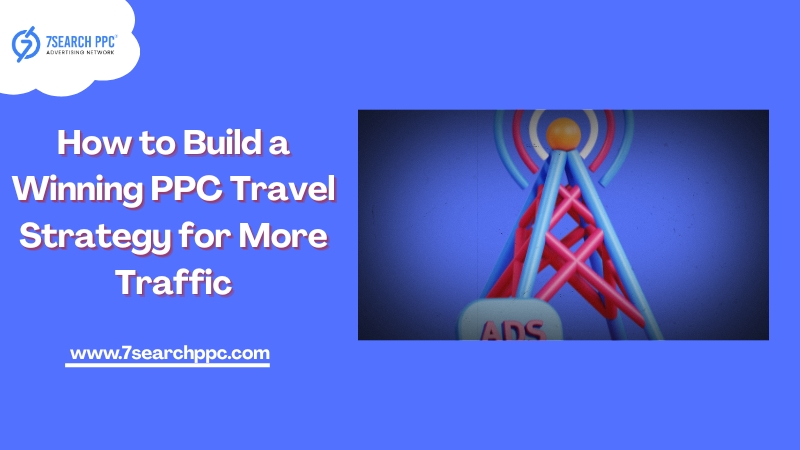In the competitive world of travel marketing, standing out requires more than just beautiful destinations and compelling offers. A well-crafted Pay-Per-Click (PPC) travel strategy can significantly boost your online visibility, attract qualified leads, and drive conversions. This article delves into the essentials of building an effective PPC travel campaign, covering everything from keyword research to ad copy optimization and platform selection.

What Is PPC Travel?
PPC Travel refers to paid advertising campaigns specifically tailored for the travel industry. Advertisers pay a fee each time a user clicks on their ad, which appears on search engines, social media platforms, or travel-related websites. This model ensures that marketing budgets are spent on users who have shown interest in travel-related queries, making it a cost-effective way to reach potential customers.
Crafting a Winning PPC Travel Strategy
Define Clear Campaign Objectives
Before launching any campaign, it's crucial to establish clear, measurable goals. Whether you aim to increase website traffic, generate leads, or boost bookings, having specific objectives will guide your strategy and help you assess your campaign’s effectiveness. Consider setting goals like:
Increasing website visits by 30% in six months.
Generating 500 qualified leads per month.
Boosting online bookings by 20% during peak travel seasons.
Conduct Comprehensive Keyword Research
Effective keyword research is the cornerstone of any successful PPC campaign. By identifying the keywords and phrases potential customers are using to search for travel services, you can create targeted ads that meet their needs. Utilize tools like Google Keyword Planner, SEMrush, or Ahrefs to discover relevant keywords, assess their search volume, and analyze competition levels.
When selecting keywords, consider both short-tail and long-tail options. Short-tail keywords, like “cheap flights,” have high search volumes but also high competition. Long-tail keywords, such as “affordable flights to Bali in July,” are less competitive and can attract more qualified traffic. A balanced approach to keyword selection will enhance your ad visibility and attract the right audience.
Choose the Right Travel Advertising Platform
Your PPC ads will not succeed unless you choose the best travel advertising platform. Among the well-known platforms are:
Google Ads: Offers extensive reach and sophisticated targeting possibilities.
Facebook Ads: Provides detailed targeting based on user interests and behaviors.
Instagram Ads: Ideal for visually appealing travel content.
7Search PPC: Allows businesses to construct PPC campaigns with customized advertising solutions.
Each platform has its strengths, and the choice depends on your target audience and campaign objectives.
Create Compelling Ad Copy and Creative
Your ad copy should be succinct, educational, and captivating. Emphasize salient characteristics and advantages to compel consumers to act. Incorporate high-quality visuals, such as stunning images or videos of destinations, to draw in potential travelers. Additionally, include a strong call-to-action (CTA) urging users to visit your website, make a reservation, or learn more. A compelling CTA can significantly increase conversion rates.
Optimize Landing Pages for Maximum Conversions
Ensure that the landing pages your ads direct to are optimized for conversions. The page should align with the ad's message, load quickly, and be mobile-friendly. Include clear CTAs, testimonials, and trust signals to build credibility. A well-designed landing page can make the difference between a click and a conversion.
Implement Ad Extensions for Enhanced Engagement

Ad extensions provide additional information and value to potential customers. Utilize features like:
Sitelink Extensions: Direct users to specific pages on your website.
Call Extensions: Allow users to call your business directly.
Location Extensions: Show your business address and proximity to the user.
Promotion Extensions: Highlight special offers or discounts.
These extensions can improve your ad's visibility and CTR, leading to better campaign performance.
Monitor and Adjust Campaign Performance
Regularly track key performance metrics such as click-through rate (CTR), conversion rate, cost per click (CPC), and return on investment (ROI). Use this data to identify underperforming ads and make necessary adjustments. Continuous optimization ensures that your PPC campaigns Conclusion
Building a winning PPC travel strategy involves a combination of clear objectives, thorough keyword research, platform selection, compelling ad creation, and continuous optimization. By following these steps, travel businesses can enhance their online presence, attract qualified leads, and drive conversions. Remember, the key to success lies in understanding your audience and delivering relevant, engaging content that meets their travel needs.
Conclusion
A well-executed PPC travel strategy can dramatically improve visibility, attract high-quality leads, and boost bookings. Whether you’re promoting hotel stays, airline tickets, or guided tours, travel advertising through PPC allows you to target, convert, and scale like never before.
Invest the time in researching keywords, optimizing your travel ads PPC, and choosing the right travel advertising platform. With consistent testing and optimization, you’ll build a travel PPC engine that keeps your business ahead of the competition — and top of mind for adventure-seeking travelers.
